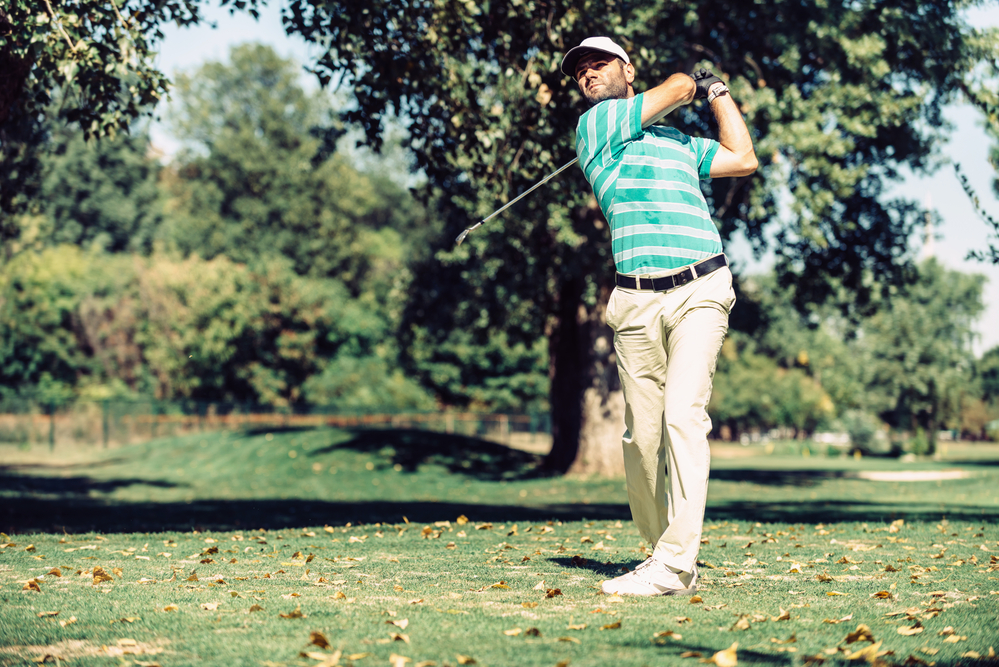Although golf is considered a type of low-intensity sport, injuries can still happen. Back pain is one of the most commonly reported injuries among golfers -which doesn’t come as much of a surprise due to the constant rotational movement involved in the swing. Several epidemiological research studies have confirmed that lower back pain stemming from golf account for approximately 18 percent to 54 percent of all documented issues.
Types of Lower Back Injuries
- Mechanical Lower Back Pain. Usually identified by localized pain, this type of lower back injury often starts slowly and could be worsened by movement. However, it generally improves with sufficient rest.
- Disc Herniation. Frequently observed among those who are in their 20s to 30s, this type of golf injury involves an acute pain. After a day or two, the pain will start to spread down your legs. The lower back pain is usually exacerbated by coughing, exhaling forcefully with a closed airway, or even something as simple as sitting.
- Spondylolysis. Also known as a pars interarticularis defect, this type of injury is one of the common causes of axial back pain among young golfers. Occurring almost completely in the lower part of the lumbar region, the pain is often intensified by constant hyperextension and overrotation. Risk factors for this injury include technical flaws, poor stamina, and muscle asymmetry.
Other less common lower back injuries in golf include facet joint pain and a stress fracture of the ribs. While the former seems to mimic spondylolysis in the sense that the pain is also triggered by hyperextension, the latter is due to a weakness in the serratus anterior, which is a fan-shaped muscle originating from the top surface of the upper ribs and located at the lateral wall of the thorax.
Diagnosis and Treatment
To treat common lower back injuries in golf, the approach often includes physical rehabilitation specific to the sport and coaching on correct swing mechanics. Several diagnostic tools need to be used by the physician to present an accurate analysis of the pain. These include the use of imaging devices, such as an X-rays, CT scans, and MRI’s. Medications may also be prescribed to help alleviate the symptoms. With diminished pain or a total lack of it, early recovery can start.
For optimal results, the rehabilitation program should be provided by a multidisciplinary team consisting of a physician specializing in physical medicine and rehabilitation, a physical therapist, and a teaching professional expert in golf. They have to work together so you can go back to the game safely.
One of the most fundamental aspects of rehabilitation plans used to treat lower back injuries in golf is core training. Your core muscles, which include your abdominals, lower back, thighs, and buttocks, are where most of the golf swing occurs. It gives you the twist and energy required to perform the swing. However, the motion places your back under great stress, which can result in pain.
After mastering the fundamentals of core strength, you may begin incorporating slightly more demanding exercises, such as twisting abs, stability ball planks, leg lifts, back bridges, curl-ups, rolling patterns, and bird dog exercises.
Tips to Keep Your Spine Healthy on the Golf Course
To prevent any golf-related injury, make sure to warm up before you start the game. Regularly check your swing mechanics to see if adjustments need to be made. Do not slouch while playing, and try to practice your swings on both your dominant and non-dominant hands since the imbalance of your trunk rotation can lead to lower back injuries. You need to minimize over-rotation, and unless you are using a double-strap or a backpack-style bag, do not carry your golf clubs. Lastly, play moderately and take breaks as needed so your body can recover more quickly from the activity.
If you’re experiencing back pain – be it related to sports or not – please know that you don’t have to live in pain…we can help! The Spine Team here at Nebraska Orthopaedic Center provides state-of-the-art care from diagnosis to treatment and recovery, allowing patients to get back to doing the activities they love the most. Contact us today at 402-436-2000 to schedule an appointment with one of our back pain specialists.

